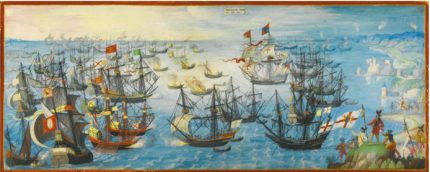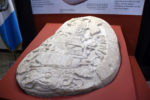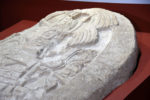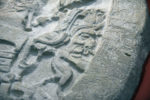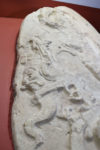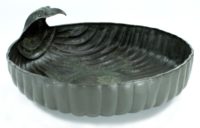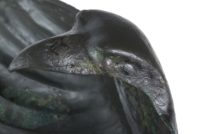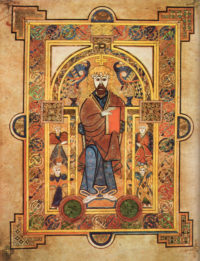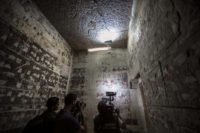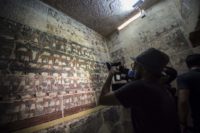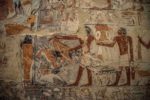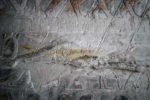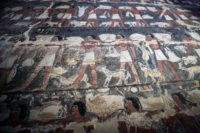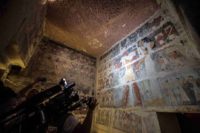The Launching Of English Fire Ships On The Spanish Fleet Off Calais depicts Queen Elizabeth I watching from the shore as her navy attacks the Spanish Armada on the night of August 7th, 1588. A horseback gentleman next to her is believed to represent Robert Dudley, Earl of Leicester. The broad panorama, Spanish on the left, English on the right, English fireships in the center, belies its small dimensions. The gouache on vellum laid down on panel is just 5½ x 13¾ inches, but it is of such significant stature that it was on display at the Rijksmuseum for twenty years (1975-1995).
Painted around 1600, it is one of only two known examples of gouache miniatures depicting this momentous event close to when it occurred. The other has been in the National Maritime Museum in Greenwich since 1938, and while they share the same theme, they are not the copies of each other. The NMM’s piece has no Queen Elizabeth, most notably, nor any shore in view whatsoever.
Both of the works were made by unknown artists in the Flemish style. Later prints and an oil painting also created by Dutch artists underscore the significance of the defeat of the Spanish Armada to England’s Protestant allies.
The miniature was recently sold at auction to an overseas buyer who applied for an export licence. Michael Ellis, Minister for Arts, Heritage and Tourism, has placed a temporary export bar on the painting because of its immense value as a contemporary rendition of one Britain’s most important events. British institutions now have until December 13th to show that they can raise the price of £210,000 (plus VAT) to acquire the painting. If they’ve gotten a reasonable way to the goal, the Minister can extend the bar another three months.
Reviewing Committee on the Export of Works of Art and Objects of Cultural Interest member Peter Barber said:
“This vibrant miniature is one of the earliest and most vivid depictions of an episode of crucial importance for the history of England. That it is the work of a Flemish artist and shows the role played by Dutch ships, additionally underline the Armada’s European-wide significance. Yet, familiar though the overall story may be, the miniature includes many intriguing details that need further investigation, such as the prominence given to the ship and arms of the commander of the English forces, Lord Howard of Effingham.
There can be few items more justly called a ‘national treasure’ and it needs to be retained in this country so that it can be further studied and enjoyed.”
